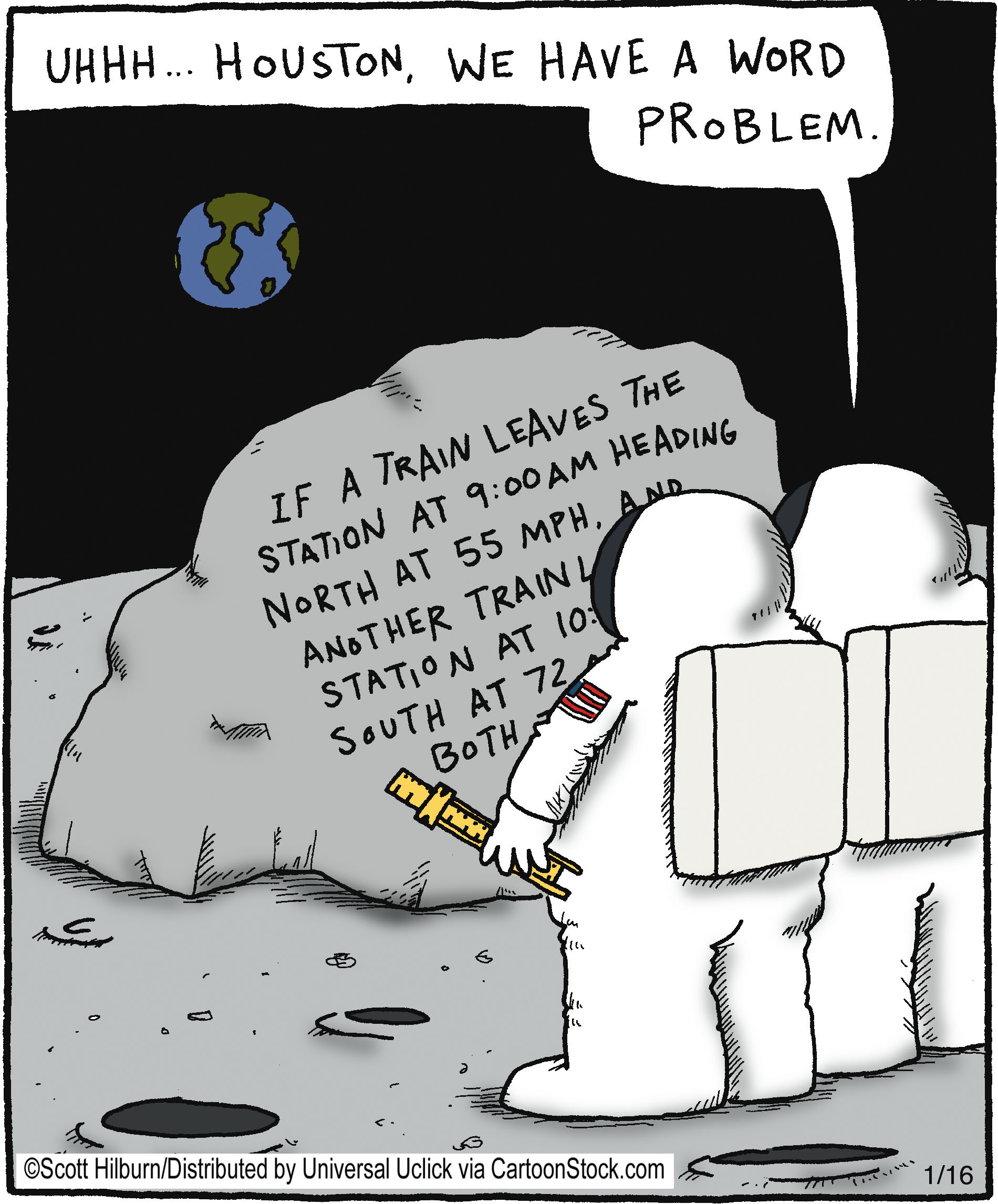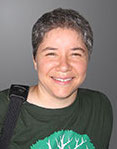Making the Most of Word Problems
by Sarah Lonberg-Lew

Whether they’re called word problems, story problems, or problems in context, they usually amount to the same thing – a short story about a character who for some reason needs to know how long it will take to do a task or how much it will cost to go on ten rides at the fair. Why do our students need to know how to answer these questions?
The clearest reason seems to be that they will have to do so on the high school equivalency test that is standing between them and their next step, be it college or career. To that end, it makes sense to teach students a strategy for finding the answer quickly and with a minimum of fuss.
As a result, many teachers choose to have students memorize a mini-dictionary of key words:
more = add
less = subtract
of = multiply
each = divide
… and the list goes on.
There are two problems with this approach. The first, and relatively minor problem, is that it doesn’t actually work.
The word “more” can indicate subtraction as easily as addition in a word problem, for example:
Jack has five more apples than Jill. Jack has eight apples. How many does Jill have?
The word “each” can mean multiply as easily as it can mean divide. Contrast the following problems:
Suzy gave five apples to each of her four friends. How many apples did she give out?
Suzy had twenty apples and gave the same amount to each of her four friends. How many did apples did each friend get?
Test makers know the key word dictionary, too and will likely present students with problems for which these key word shortcuts don’t work. This is not because they are trying to trick our students or make them fail, but because the purpose of word problems is not to assess how well the students have memorized the key words. It is to assess their ability to reason.
And this brings me to the second and much bigger problem with this approach: it wastes our students’ time and deprives them of the opportunity to learn something valuable. Using key words to solve tidy word problems may help them score some points on the test, but that’s where its (already questionable) usefulness ends. It’s a shame to invest so much time and energy on such a short-sighted goal. Instead we can choose to capitalize on the need to learn to solve word problems as an opportunity to develop confidence and skill with mathematical reasoning and critical thinking.
One good way to push students to reason about word problems instead of trying to find the answer as quickly as possible is to remove the question and maybe even some necessary information from the problem. For example:
Jack and Jill went apple picking. The orchard charges $8 per person for admission. A half-peck bag costs $10 and a one-peck bag costs $18.
Think of all the questions your students could ask and answer with this simple scenario, like:
- How much would it cost for each of them to pick a half-peck of apples?
- How much would it cost for Jack to pick a half-peck and Jill to pick a whole peck?
- If they have $50 between them, how many bags of apples can they get and in what sizes?
… and so many more.
By asking and answering questions, students are really engaging with their math. They are reasoning about how the quantities in the problem relate to each other and what role each of them plays. They are choosing and using operations to answer a question that they understand instead of following a translation code that they have memorized. And the skills that they are acquiring through this process are transferrable and therefore worth spending their time on. (See https://adultnumeracyatterc.wordpress.com/2017/02/16/changing-how-problems-are-presented/ for more ideas on how to present word problems and more in ways that get students reasoning.)
My students want to pass their high school equivalency tests and I want that for them too, but I want more for them as well. I want them to be able to reason about the real problems in contexts that really do come up in their lives and that aren’t presented in tidy packages with key words. I want them to be able to make sound decisions about how they invest their time and money so they really can choose the phone plan that’s best for them or figure out how many classes they can take in a semester and still make rent and feed their families. And I want them to be savvy consumers of the quantitative information that comes at them every day so they can reason confidently about the real and messy numbers in their lives.
Word problems are sometimes silly and contrived, but we are stuck with them and we can slog through them without learning anything or we can use them as a way to develop strong reasoning in our students that will serve them beyond test day.
=========================
 Sarah Lonberg-Lew has been teaching and tutoring math in one form or another since college. She has worked with students ranging in age from 7 to 70, but currently focuses on adult basic education and high school equivalency. She teaches in an adult education program in Gloucester, MA. Sarah’s work with the SABES Mathematics and Adult Numeracy Curriculum & Instruction PD Center at TERC includes developing and facilitating trainings and assisting programs with curriculum development. She is the treasurer for the Adult Numeracy Network.
Sarah Lonberg-Lew has been teaching and tutoring math in one form or another since college. She has worked with students ranging in age from 7 to 70, but currently focuses on adult basic education and high school equivalency. She teaches in an adult education program in Gloucester, MA. Sarah’s work with the SABES Mathematics and Adult Numeracy Curriculum & Instruction PD Center at TERC includes developing and facilitating trainings and assisting programs with curriculum development. She is the treasurer for the Adult Numeracy Network.
